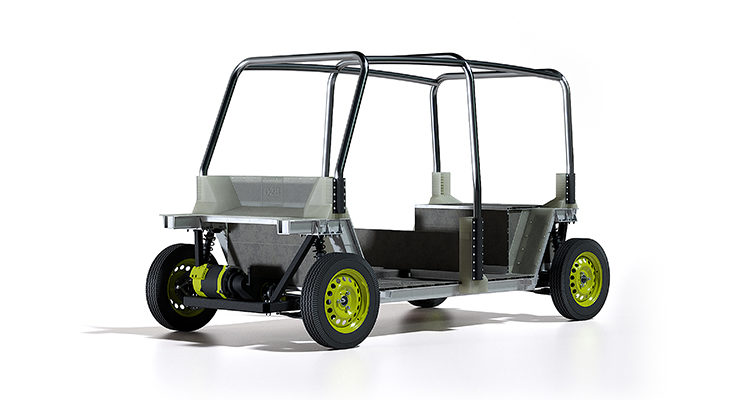At this stage of the project, D2H is evaluating production processes for the tuk-tuk chassis. “The main challenge is to manufacture the chassis simply and cheaply with conventional manufacturing processes to open supply options as much as possible,” says Hicks. “We’re looking at how might we quickly train partners in these geographic markets to produce parts to widen the scope of distribution.”
Possible production methods include extrusion and compression molding, the latter of which would allow for volumes in the tens of thousands with relatively low-cost tooling, says Hicks. “Eventually, should volumes reach hundreds of thousands, the process can easily transfer to injection molding,” he adds.
Some of the tooling for the chassis has been built, and WMG is ready to perform trial production. However, the COVID-19 pandemic has complicated this phase of the project.
The chassis design meets the L7e heavy quadricycle European Union vehicle classification, so it is exempt from crash test assessment, but the goal is to raise the bar for safety performance in its price sector, according to Hicks. Currently, the chassis is paired with proprietary suspension, brakes and steering from a current vehicle, with front-wheel drive, a front-mounted motor and battery packs stored between the rear wheels. The vehicle weight is 1,058 pounds. “We envision power and cooling sufficient for 12 hours of continuous use,” says Hicks.
For commercialization, Hicks says the company requires an industry partner such as a Tier 1 or OEM for the power train, energy storage and body panel development. In addition, to break into local markets such as India, D2H will seek domestic partners to fully understand local use and demand criteria.
For Coventive, the tuk-tuk provides an opportunity to showcase the jute fiber and polypropylene matrix. “It is interesting for us to see how others might use this material,” says Hare. The project could help Coventive to build relationships in India or Bangladesh, for example, for jute supply chain possibilities, then transfer its technology to those partners for licensing.
The goal now is to produce a running prototype as soon as possible. “There is nothing quite like having a vehicle to inspire potential partners,” says Hicks.


